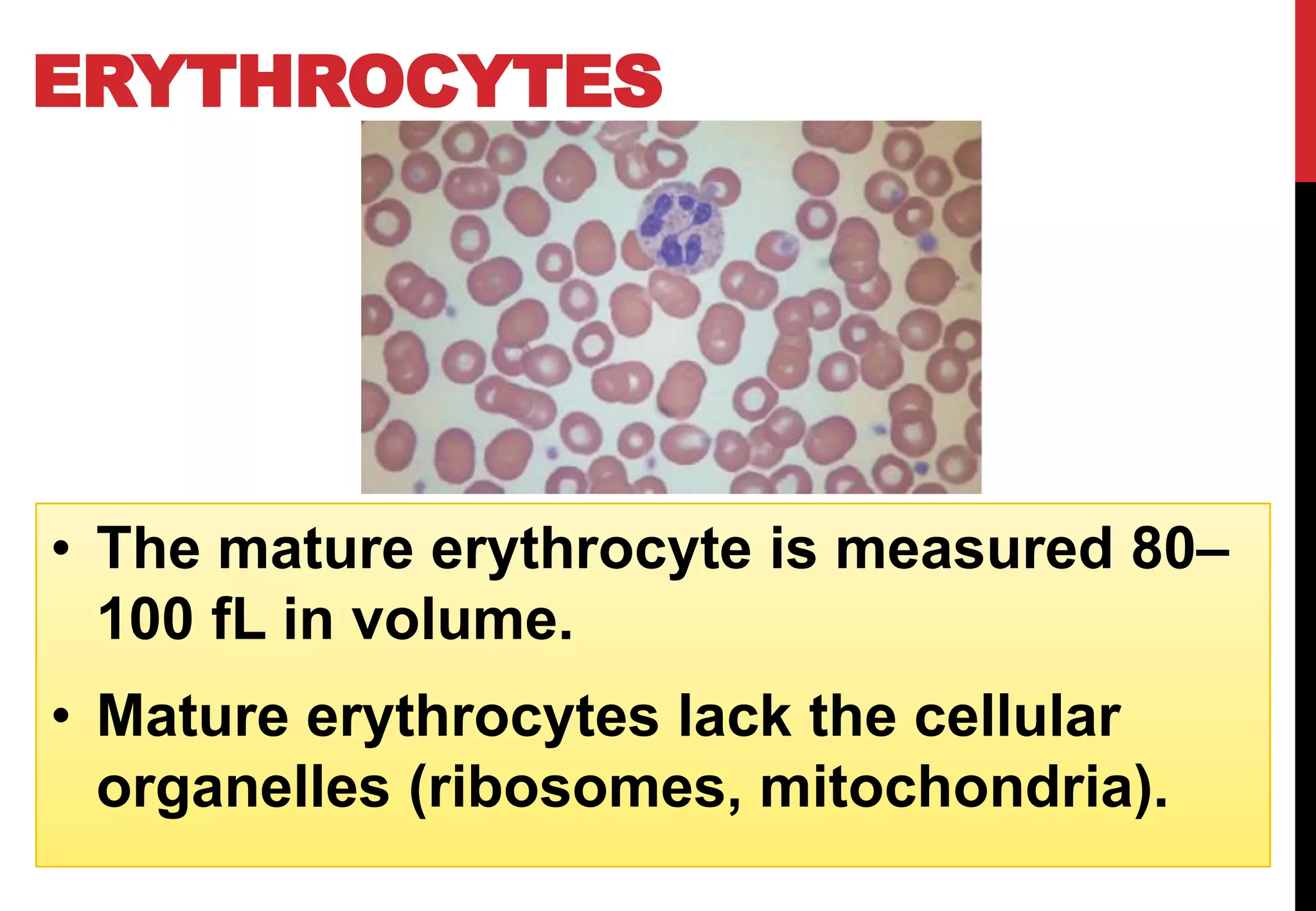Red blood cells, white blood cells, and platelets are the three main components of blood. Red blood cells transport oxygen and carbon dioxide, white blood cells provide immunity, and platelets help with clotting to stop bleeding. The document discusses the structure and function of each blood component in detail over several pages.









































































